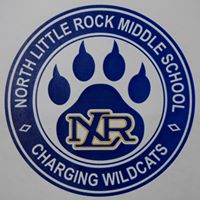
To kick off a statewide Arkansas initiative to reach all students with excellent teaching, North Little Rock Middle School will begin creating an Opportunity Culture® for teachers and students this fall, using teams led by multi-classroom leaders—experienced, excellent teachers who are paid more to lead a team, and are held accountable for student outcomes, teacher support, and team success.
Additionally, the North Little Rock district will use the Summit Learning Platform to personalize student learning. Summit Public Schools, located in California, created the platform to help students set and track goals at their own pace.
By merging the principles of an Opportunity Culture® with Summit’s nationally acclaimed blended-learning model, North Little Rock Middle School will ensure that its 1,800 students benefit from a team-based and supportive school climate, Principal Lee Tackett said.
“The Summit Learning Platform can make personalization easier for Opportunity Culture® multi-classroom leaders and teams as they pursue high-growth learning for every student,” said Bryan C. Hassel, co-director of Public Impact®, which leads Opportunity Culture®.
With North Little Rock Middle, the national Opportunity Culture® initiative—which extends the reach of excellent teachers and their teams to more students, for more pay, within recurring budgets—now includes about 20 sites in eight states. State education officials in Arkansas plan to expand to more schools around the state in the 2018–19 school year.
North Little Rock Middle will begin with multi-classroom leaders in sixth grade, with plans to expand to all middle school grades the following year. Multi-classroom leaders continue to teach while leading a team, coaching, co-teaching, co-planning, and collaborating with their team teachers to deliver high-standards, personalized instruction, while taking accountability for the learning outcomes of all the students the team serves.
District and school leaders are now working with Public Impact® to strengthen and scale up their initial design. As in other Opportunity Culture® districts, a school design team that includes teachers will reallocate each school’s budget to fund pay supplements permanently, in contrast to temporarily grant-funded programs.
The middle school, the only one in the 13-school district, has about 100 teachers. Of its 1,800 students, about 61 percent are black, 29 percent white, and 7 percent Hispanic, with approximately 71 percent eligible for free or reduced-price lunch.
In this large school, the sixth grade functions essentially as its own campus. Its planned use of MCL-led teams is intended to create a grade-wide Opportunity Culture®—placing all core content teachers on MCL teams. Most of the high-growth, high-poverty Opportunity Culture® schools nationally cover core subjects schoolwide, and multi-classroom leaders work as a team to help each other lead.
The clearest comparative data on Opportunity Culture® schools come from North Carolina. Fifty-nine percent of Opportunity Culture® schools in North Carolina in 2015–16 exceeded student growth expectations, more than double the percentage of N.C. schools overall at just 28 percent, according to school performance data from the state. Results are similar for high-poverty schools, which make up about two-thirds of the Opportunity Culture® schools in North Carolina.
The Summit Learning Platform offers a customizable, teacher-developed curriculum aligned with state standards. Students progress at their own pace on it, with help from teachers and a mentor. Daily data show teachers, as well as students and parents, each student’s progress every day, so they can personalize instruction to each student’s needs. The Arkansas Public School Resource Center (APSRC) introduced the platform to Arkansas educators and will support the implementation of it in 14 pilot schools across the state.
Note: Public Impact® and Opportunity Culture® are registered trademarks; Multi-Classroom Leader® and MCL™ are trademarked terms, registration pending.
